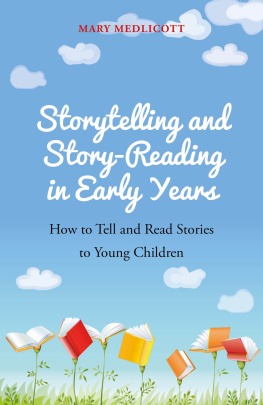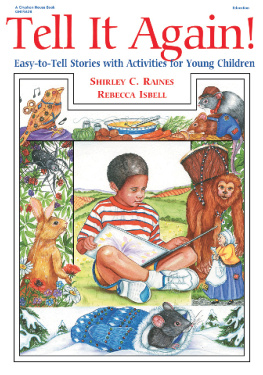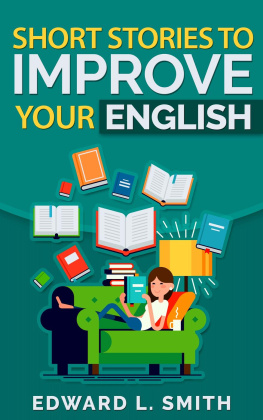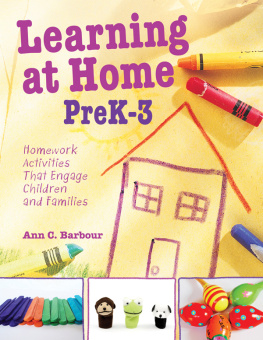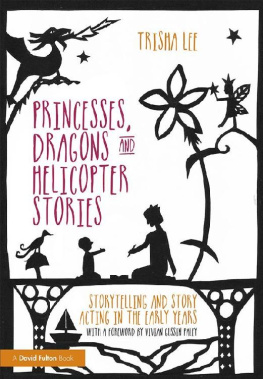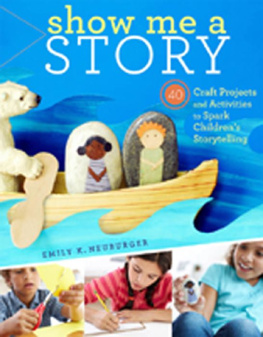
STORYTELLING and
STORY-READING in
EARLY YEARS
HOW TO TELL AND READ STORIES TO YOUNG CHILDREN
MARY MEDLICOTT

Jessica Kingsley Publishers
London and Philadelphia
Contents
THE IMPORTANCE
OF STORY

Stories are all around us. Theyre in books and paintings, on TV and in films, in our dreams and day-dreams and in our conversations. Where would we be without them?
Imagine: Its Friday evening. You get together with friends for a quick drink before the weekend. Almost immediately, youre hearing a story. What happened when one friends car broke down at midnight on the way home from a visit to her mother? What happened when another friends child was terribly sick in the middle of the night? What happened when a third friends cat went missing for four whole days? Its all very absorbing. One story sparks off another; its the stuff of life but you probably dont normally ask yourself what life would be like without it.
Then its Saturday night. You go to the cinema with your partner. The film you both wanted to see is a thriller. Youre on the edge of your seat. Can you bear it? When you come out, youre talking about it. What was actually going on remember? when those two robbers were talking in that bar? Was she really in love with him by then? Its funny how much we take for granted. If films had never been invented, what would we do on a Saturday night?
By now, its the middle of the week, Wednesday morning. Youve had to take time off work. Theres a family funeral youve got to attend. Everyone present is sad but theres a lot of good humour too. Grandma was old, shed had a good life, and at the tea and sandwiches after the service, you all stand around and remember. You recall those times when you were all children and Grandma would astonish you and make you laugh with those tales of her growing up. You remember when you were teenagers and she never minded when you dyed your hair, she liked it. You remember once when she got furious because one of her neighbours had kicked her cat.
EVERYDAY TALES
All this talking is part of storytelling. Its the informal part, the stuff of ordinary everyday living, and its well worth thinking about how our lives would be if it never occurred. Of course, for some people, not much of it does. People isolated by mobility problems, loss of family and friends or lack of money. People with depression, hearing loss or serious illness. People whove been obliged to move home or country and, perhaps because of language problems, havent made any friends where they live now. Or people who are terribly shy. Besides, its not everyone who is able to tell their stories even if theyve got someone to tell them to. I remember one young mother on a storytelling course I was running. Towards the end of the term, she reported feeling very moved. She told me why. Before she came on the course, she said, her husband had never really said anything about his life before he met her, his childhood or growing up days. She and their children knew little about him. Now, responding to all the different kinds of stories shed passed on to him from the course, hed started talking, telling them things. They were learning much more about him. His wife felt grateful for the change.
TRADITIONAL TALES
Our life stories are vital. We wouldnt be human without them. But in the vast store of the worlds stories, they form only one department. Others are comprised of the myths and legends, the folk tales and fairy tales, tall tales, jokes and riddles that people have shared in all the different parts of the world where human beings have lived going back to the beginnings of spoken language. It can be daunting even to think about it. Ancient Greek stories of the gods and goddesses. Old Norse sagas of mighty heroes. The Arabian Nights from the Middle East, the Mahabharata from India, the Mabinogion from Wales. Tales from the Americas, Iceland, Russia, the South Sea Islands, Africa, you name it: every part of the world has its stories. Some, such as the folk tales that were collected and published in 19th-century Germany by the Brothers Grimm, will be more familiar to more of us in the West. Others will remain outside our consciousness. Yet insofar as theyve been passed on, whether in published or oral form, they continue to affect the cultures of the world as these exist today. Poets, novel writers and film-makers will have been influenced by them. So will the creators of childrens computer games.
TALES WE CREATE
Stories we create for ourselves form another important section in the immeasurable world of storytelling. Its probably not a branch of storytelling that most people think of as having anything at all to do with them. Isnt making up stories what authors do, novelists and childrens book writers and people like that? Yes. But its also what the dreamers among us do when we imagine different lives for ourselves how we might meet the love of our life and settle down in a lovely old house in the country with a dog and some cats and oh, how about some children? Or how about our career ambitions how we might get to run a bookshop one day or maybe even write a best-seller? And what about that strange dream you had last night? Where did that come from? Didnt it come from somewhere inside you?
I could go on. Even as we refer to our everyday tales of our own lives, its possible to make a connection with history-writers and how they form our knowledge of the past. Digging into the archives of recorded events, researching previously unrecorded aspects of them, they have their own special understanding of the importance of story.
WHY STORIES ARE IMPORTANT
This book deals with the importance of stories for the full range of early years children with particular focus on three-to five-year-olds. It will cover two different ways of passing on stories, namely oral storytelling (telling a story without a book) and story-reading (reading a story from a written text, though perhaps with some rewording or ad-libbing). Yet, even as growing young children are at the centre of the books concerns, the book itself must inevitably be addressed to the adults in their lives. It is written for people who work with children teachers, nursery nurses, special assistants, speech and language specialists, psychotherapists, lunchtime assistants and supervisors and also parents, foster parents and carers. For the concern of the book is how we as adults can help to give children the joyous and ever-expanding familiarity with stories that will form a positive basis for their development as human beings.
LEARNING AND DIGESTING
For a start, stories give a firm basis for the learning of language: stories normally (though not always) employ words, some of which might be new to an early years audience. Yet those words always come in a context, a framework which offers its own clues to the children who hear them as to what the words mean and how they are used. Then again, stories teach shape: they have beginnings and endings and middles. Shapes are useful because they give patterns and patterns are useful because they help us to understand what happens to us. Besides, the shapes of stories are more than architectural. They come with content, which includes emotions, and we all have to work hard to understand our own emotions let alone those of other people. Further to all of that, all stories are some kind of journey. Experiencing the journey, however long or short, involves discovering that, after it has started, it will sooner or later have an end. This discovery is highly productive for all kinds of things in the rest of life. Lessons, mealtimes, sitting on buses: accepting that stories have beginnings and ends teaches you about getting through time and, by the by, how to look out for something that might interest you along the way.
Next page
